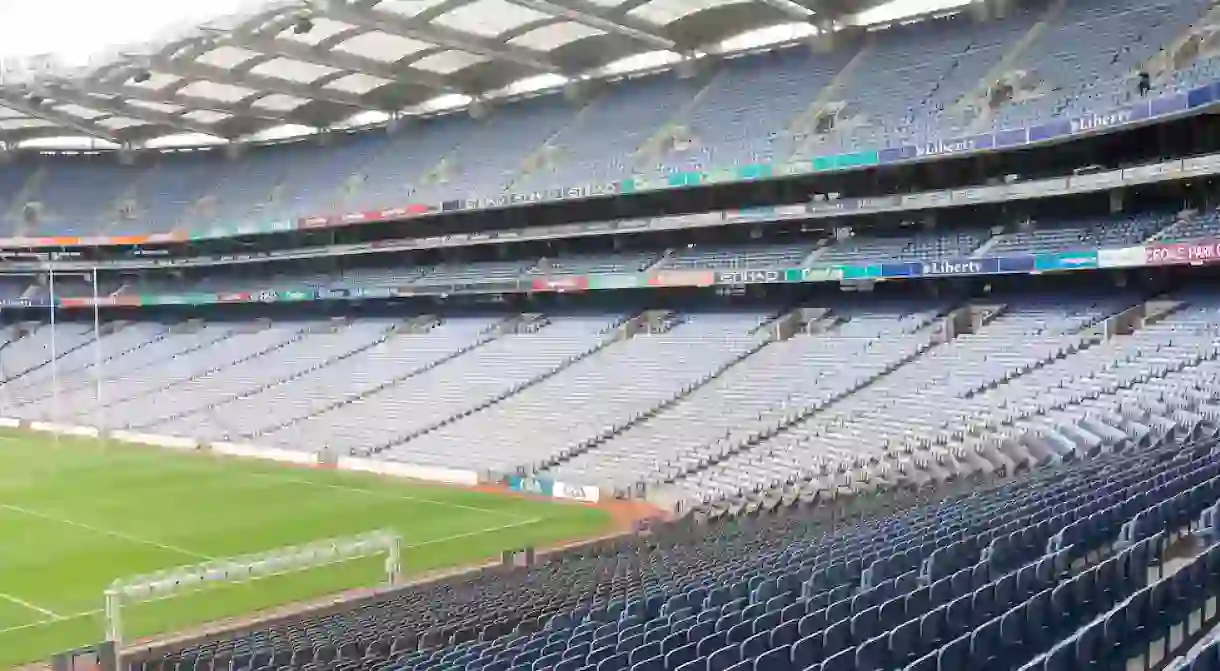What You Need To Know About Gaelic Football

As the people of Ireland prepare for a thrilling All-Ireland Senior Football Championship Final between Dublin and Mayo on September 18th – the teams last met in the final in 2013, with Dublin emerging victorious – we take a look at the five things you need to know about the uniquely Irish sport that is Gaelic football.
1. Its first appearance in Irish records was in 1308.
Although Gaelic football was only officially first codified in 1887, it evolved from the various kinds of Irish football games – grouped together under the name of caid – that were popular in rural areas long prior. The earliest mention of football that can be found in Irish legal records was in 1308. A man called John McCrocan – who was watching a match in County Down – is said to have ‘accidentally stabbed’ a player. No further elaboration is given. The earliest recorded inter-county Gaelic football match took place at Slane, County Meath in 1712, between Meath and Louth.

2. Playing football was a fineable offence in 1695.
Football survived earlier bans that had been imposed on native Irish sports, like hurling, by the ruling elite – such as the Statute of Galway, 1527 – but was finally banned in 1695 as part of the Sunday Observance Act. According to this law, anyone caught playing sports was to be fined a shilling. Even though this would have been quite a sum at the time, the ban doesn’t appear to have been effective, and the game continued to grow in rural counties.

3. It was almost eclipsed by rugby.
As the English game of rugby football became increasingly popular in Ireland during the 19th century, caid was played less and less frequently, even in countryside strongholds. Following the period of mass starvation which had decimated the population from 1845 to 1852, the country struggled to recover economically and emotionally. In 1884, the Gaelic Athletic Association was founded to foster and promote those Irish pastimes that were being all but forgotten. Gaelic football was officially codified three years later and has gone from strength to strength ever since.

4. It has no offside rule.
Said to fall somewhere between rugby and soccer, Gaelic football is notable in that it is one of few field sports with no offside rule. Officially standardised in 1887, Gaelic was the third form of football to be codified in Ireland, and many of the game’s early rules sought to differentiate it from rugby, which does have an offside rule. The first rules for the game – developed by Maurice Davin, co-founder and the first President of the GAA, in 1885 – were revised in 1888 after being criticised for vagueness.

5. It’s one the world’s last remaining stringently amateur sports.
Even though Gaelic football is Ireland’s most watched game, high-level players don’t get paid, and most have full-time jobs, making it almost unique in the world of sports. Over 80,000 people attend the All-Ireland Senior Football Championship every year, and Sky Sports now broadcast GAA fixtures, but the game is still based around the volunteer ethos with which it was originally founded. However, the GAA and the Gaelic Players Association (GPA) recently made an agreement that involves support for players’ personal development – including education, career and leadership skills and counselling.














